Art
Jumpy the Dog Artist
I recently posted about DogVinci the Dog Artist, but I think Jumpy is actually a better artist.Jumpy's owner is dog trainer Omar von Muller.
Posted By: Alex - Mon Apr 11, 2016 -
Comments (7)
Category: Art, Dogs
More Art of the Insane
Following up on Paul's post yesterday about the Electric Pencil. Here's some art created by patients in the criminally insane ward of St. Elizabeth Hospital in Washington D.C., mid-1930s.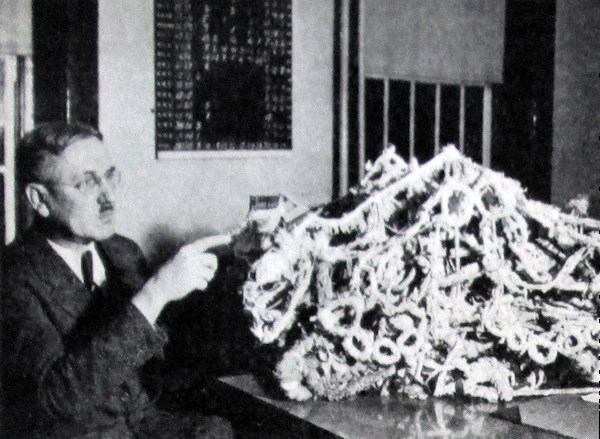
A "working model of the fourth dimension," examined by Dr. John E. Lind.
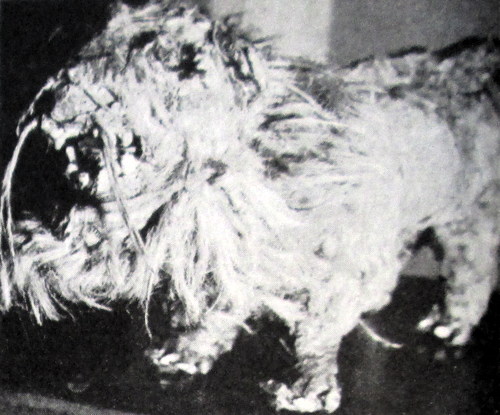
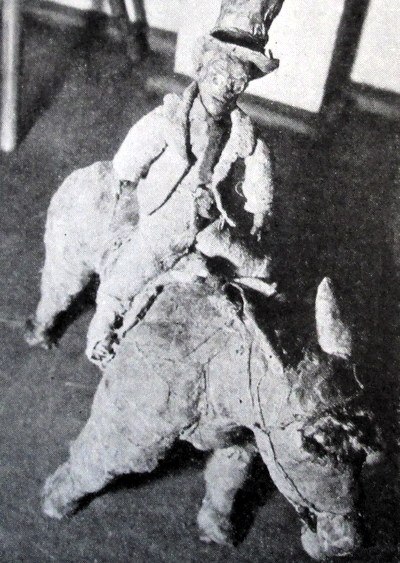
A lion (top) and a man on a horse (bottom), created by a "shellshocked, cop-killing veteran" out of chewed toilet paper, hair from clothes and blankets, and cellophane. "Jealous of his accomplishments, the veteran guards his work as assiduously as a setting hen; it must be taken from him while he is asleep."
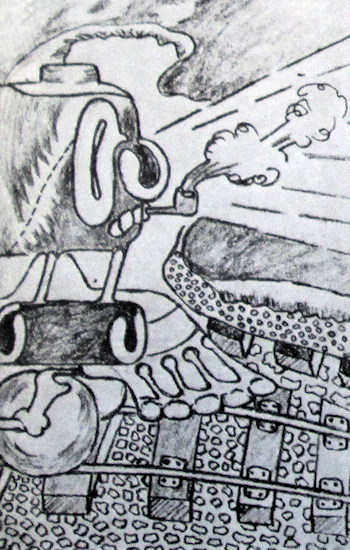
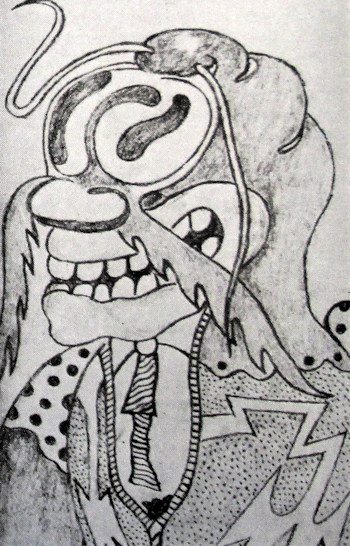
A locomotive (top) and "something that looks like a caricature of a capitalist" (bottom) drawn by "a mental 10-year-old."
Source: Newsweek - Jan 9, 1937
Also see the earlier post, Art of the Insane, to compare artwork from patients at St. Anne Hospital in France, mid-1940s.
Posted By: Alex - Wed Mar 30, 2016 -
Comments (5)
Category: Art, 1930s
Cat Who Is Artist
Another animal artist, to complement Alex's canine.
Posted By: Paul - Wed Mar 23, 2016 -
Comments (3)
Category: Art, Cats
DogVinci, the Dog Who Paints
Here at WU we've considered the art of a number of non-human species, including rats, otters, and horses. But not yet dogs. So it seems appropriate to give a nod to Dagger II (aka DogVinci) who's been making headlines lately as a canine artist. You can see some of his work at his Facebook page.The only other canine artist I'm aware of is Alexis Boyar, who rose to fame back in 1974. I've got an article about Boyar over at the Museum of Hoaxes — the hoax being that Boyar won a prize in an art competition, having failed to disclose on the entry form that he was a dog.

Posted By: Alex - Mon Mar 21, 2016 -
Comments (7)
Category: Animals, Art
Sofa Fort Art
Emily Binks recently won Scotland's largest art prize, the Glenfiddich Residency Award, worth £10,000, for her sculptures that consist of abandoned pieces of furniture piled on top of each other.Her sculptures remind many of the "sofa forts" that children like to make. In fact, a representative of the award program specifically called attention to this resemblance: "Her sculptural assemblage invokes a basic fundamental of the human condition: from building dens as children to setting up homes as independent adults, we can all relate to the creation of a place to shelter and a sense of belonging."
More info: Press and Journal, TYWKIWDBI

Posted By: Alex - Wed Mar 16, 2016 -
Comments (7)
Category: Art, Furniture
Personal Space Preference Cards
Created by Sydney-based artist Michael Pederson, who likes to create odd signs and leave them in public places. He calls them his "public projects."More about him here and here.
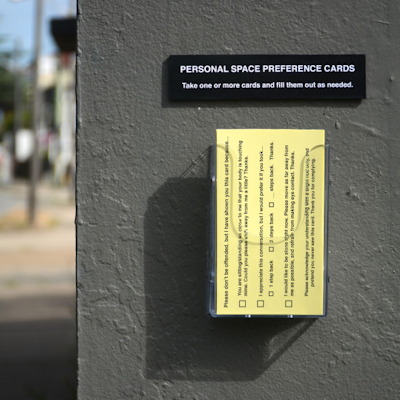
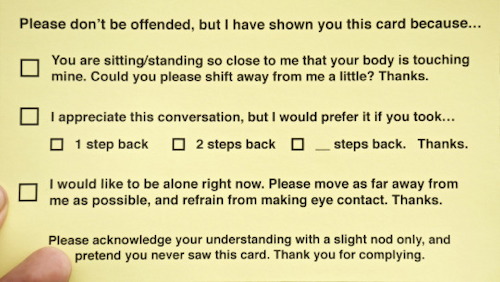
Posted By: Alex - Fri Feb 26, 2016 -
Comments (10)
Category: Art
Space Tourism Posters
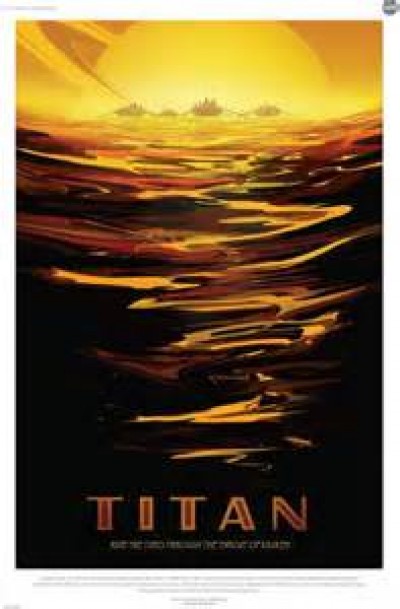
NASA is giving away space tourism posters. NASA had the posters designed, presumably to encourage continued interest in the space program. Whatever the purpose, the posters are very cool. Check them all out at the link.
Posted By: Alex - Mon Feb 15, 2016 -
Comments (8)
Category: Art, Spaceflight, Astronautics, and Astronomy, Graphics
Moldy Fashion
May 1999: Belgian fashion designer Maison Martin Margiela had a fashion/art exhibition at the Brooklyn Anchorage gallery in New York City in which he displayed his latest creation — mold-covered clothes. Reported Time: "The clothes were dipped in agar and treated with mold, bacteria and yeast; they were then left to develop new colors and textures (the smell is a bonus)."In fairness to Martin Margiela, this was more art than fashion show. According to art historian Ingrid Loschek, the display "compared the natural cycle of creation and decay to the consumer cycle of buying and discarding."
The moldy clothes were burned at the end of the exhibition, since they were in such an advanced stage of decomposition that they were unfit for anyone to wear.
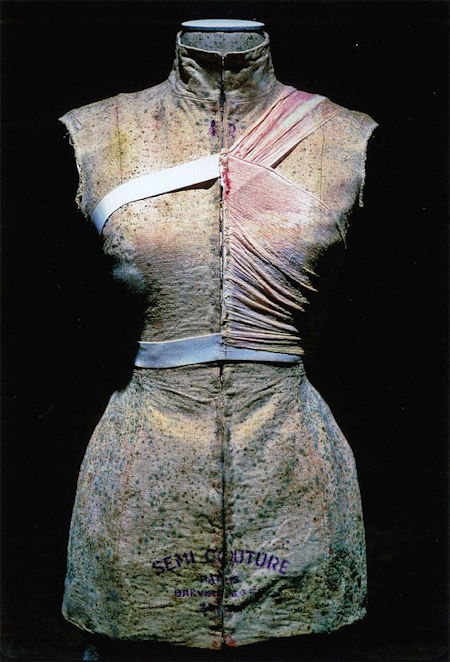
via pinterest
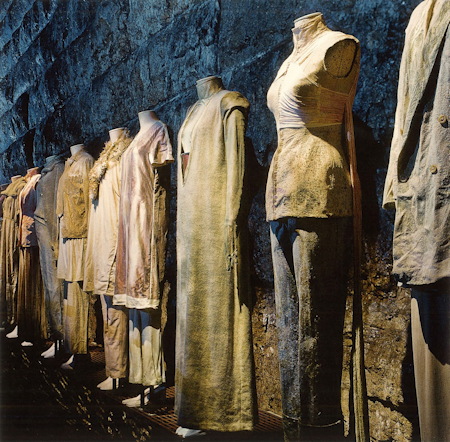
via Slow and Steady Wins the Race
Posted By: Alex - Wed Jan 27, 2016 -
Comments (9)
Category: Art, Fashion, 1990s
Horse on a bean bag?

The title of this work is "Moje Sabz." It was created by Iranian-born artist Soheila Sokhanvari, and is currently on display at the Champagne Life exhibition in London, which is a showcase of art by women.
So what exactly is going on in the piece? Is it a horse on a bean bag? A horse with an airbag? The Saatchi Gallery explains that it's actually about "the ‘Green Movement’ uprising of 2009 [in Iran], in which violent protesters’ demonstrations lead to the annulment of a fraudulent election result."
Well, now that's pointed out, it's obvious really.
[For the record, I would LOVE to have this piece on display in my living room, though a) I couldn't afford it, and b) my wife would divorce me if I did.]
Posted By: Alex - Thu Jan 14, 2016 -
Comments (9)
Category: Art
Universal Colorblindness Test
New stuff from artist Jonathon Keats. He's developed what he calls a "Universal Colorblindness Test," which combines the standard colorblindness test with the new fad for adult coloring books.He describes it as the first colorblindness test that will "adapt to each viewer’s eyesight as the viewer colors them in." He adds, "My test is the first to internalize chromatic subjectivity, ensuring equally positive test results for everybody.”
Available at Walls360.


Posted By: Alex - Wed Jan 13, 2016 -
Comments (4)
Category: Art, Eyes and Vision

| Who We Are |
|---|
| Alex Boese Alex is the creator and curator of the Museum of Hoaxes. He's also the author of various weird, non-fiction, science-themed books such as Elephants on Acid and Psychedelic Apes. Paul Di Filippo Paul has been paid to put weird ideas into fictional form for over thirty years, in his career as a noted science fiction writer. He has recently begun blogging on many curious topics with three fellow writers at The Inferior 4+1. Contact Us |




